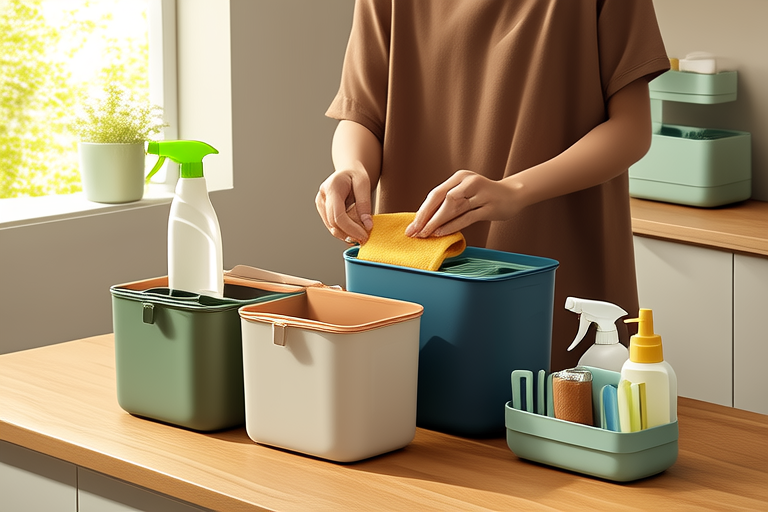Introduction: The Importance of Maintaining a Clean Home for Busy Parents
Being a parent is one of the most rewarding yet challenging roles in life. Between juggling work, school runs, and extracurricular activities, finding time to keep your home clean can feel like an impossible task. However, maintaining a clean and organized living space is crucial for both your family’s health and your own sanity. A clutter-free environment not only reduces stress but also promotes better sleep, improves focus, and fosters a positive atmosphere for your children. In this article, we will explore essential cleaning routines that busy parents can incorporate into their daily lives without feeling overwhelmed.
1. Decluttering: The First Step Towards a Cleaner Home
Before diving into deep cleaning, it’s important to start with decluttering. Clutter can quickly accumulate, making it harder to maintain cleanliness over time. Decluttering involves sorting through items in your home and deciding what to keep, donate, or throw away. Here’s how you can approach decluttering effectively:
Step-by-Step Guide to Decluttering:
- Start Small: Begin by tackling one room at a time. This makes the process less overwhelming.
- Sort Items: Use three boxes labeled “Keep,” “Donate/Sell,” and “Throw Away.” Place items accordingly as you go through them.
- Be Ruthless: Be honest about whether you really need each item. If something hasn’t been used in over a year, consider letting it go.
- Maintain Regularly: Once your home is decluttered, set aside time each week to reassess and tidy up.
By regularly decluttering, you create a foundation for easier cleaning and prevent unnecessary accumulation of dust and dirt.
2. Efficient Daily Cleaning Habits
Daily cleaning doesn’t have to be time-consuming if done efficiently. Incorporating small habits into your routine can make a big difference. Here are some practical tips:
Quick Tips for Daily Cleaning:
- Dust Surfaces: Spend just five minutes each day wiping down surfaces like countertops, shelves, and electronics.
- Vacuum Regularly: Vacuum high-traffic areas like hallways, living rooms, and bedrooms at least once a week.
- Use Microfiber Cloths: These are great for picking up dust and pet hair without leaving streaks.
- Bathroom Maintenance: Wipe down sinks, mirrors, and counters after each use to prevent buildup.
These simple tasks can help keep your home looking fresh and reduce the amount of deep cleaning needed later.
3. Deep Cleaning on a Schedule
While daily maintenance is key, deep cleaning certain areas of your home is necessary to ensure long-term hygiene. Creating a schedule helps manage these tasks more effectively. Below is a suggested deep cleaning plan:
Recommended Deep Cleaning Schedule:
- Weekly: Wash linens, mop floors, and clean bathrooms thoroughly.
- Monthly: Dust blinds, baseboards, and ceiling fans.
- Quarterly: Clean out refrigerators, ovens, and air vents.
- Yearly: Inspect and clean HVAC systems, windows, and gutters.
By breaking down deep cleaning into manageable intervals, you avoid last-minute rushes and maintain a healthier living environment.
4. Involve Your Children in Cleaning
Involving kids in household chores can teach them responsibility while lightening your load. Start by assigning age-appropriate tasks:
Age-Appropriate Chores for Kids:
- Ages 2-4: Picking up toys, putting clothes in laundry baskets.
- Ages 5-7: Feeding pets, setting tables, helping with dishes.
- Ages 8-10: Sweeping floors, washing windows, assisting with vacuuming.
Teaching children to contribute to household chores early on fosters teamwork and encourages a sense of ownership over their environment.
5. Streamlining Cleaning Supplies and Tools
Having the right tools can significantly improve efficiency. Invest in versatile products that serve multiple purposes:
Essential Cleaning Supplies:
- Microfiber Mops and Cloths: Great for dusting and mopping.
- Multi-Surface Cleaners: Versatile for various surfaces.
- Steam Cleaners: Useful for sanitizing without harsh chemicals.
- Organizers: Keep supplies neatly stored and easily accessible.
By choosing quality tools and organizing them well, you save time searching for supplies and ensure they’re always ready when needed.
Practical Case Study: Sarah’s Weekly Cleaning Routine
Sarah, a single mother of two, found herself struggling to balance work and home responsibilities. She implemented the following routine:
- Monday: Declutter living room, wash linens.
- Tuesday: Deep clean kitchen, organize pantry.
- Wednesday: Tackle bathroom, wipe down surfaces.
- Thursday: Vacuum bedrooms, mop floors.
- Friday: Laundry day, involve kids in chores.
- Weekends: Focus on outdoor spaces and deep cleaning tasks.
Sarah reports feeling much less stressed and more organized since adopting this structured approach.
Conclusion: Implementing These Routines for Success
In conclusion, integrating these cleaning routines into your busy schedule can transform your home from chaotic to calm. By starting with decluttering, establishing daily habits, scheduling deep cleans, involving your children, and streamlining supplies, you set yourself up for success. Remember, consistency is key—small efforts consistently add up to significant improvements. Start today by identifying one area where you can begin implementing these strategies and watch your home transform into a sanctuary for your family.
